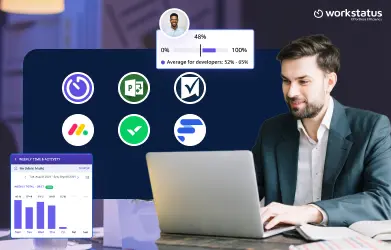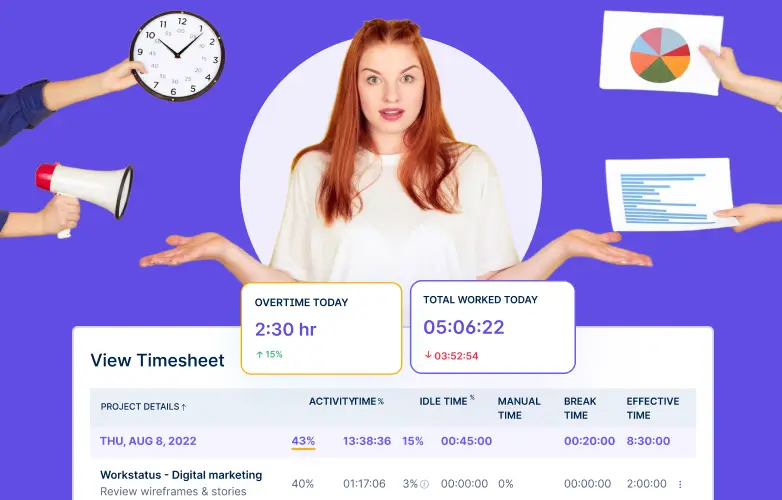Table of Contents
Collaboration is key to productivity and team cohesion in the hybrid work model.
Communication gaps, poor workflows, and a lack of pervasive progress tracking can hinder remote and office employees. The right collaboration tools can make things work by keeping communication in check, enabling project management, and facilitating live coordination.
This blog lists seven remote team collaboration tools that help remote and office teams work together seamlessly, monitor remote teams, increase productivity, and create connected workforces.
Let’s get into it!
Top 7 Tools for Seamless Collaboration
Here is the list of top 7 collaboration tools that you can afford to miss:
Workstatus
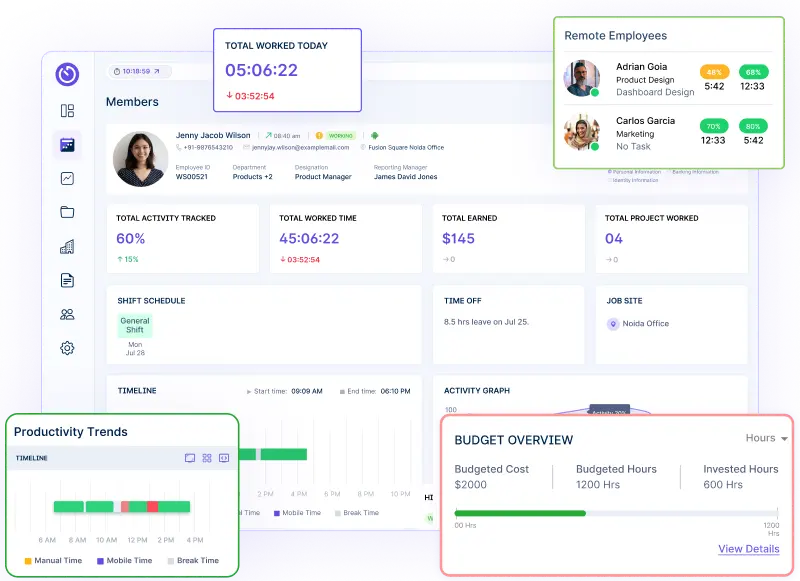 Workstatus is an all-in-one workforce management and project management tool focused on improving efficiency, accountability, and collaboration.
Workstatus is an all-in-one workforce management and project management tool focused on improving efficiency, accountability, and collaboration.
The platform helps streamline employees’ operations, whether they work from an office, remotely, or in hybrid setups. It tracks work hours and follows up on employee performance for better office and remote team management.
By automating time tracking, optimizing resource allocation, and offering real-time project insights, Workstatus ensures teams stay productive and aligned with business goals.
Key Features
1. Time Tracking with Automated Timesheets
- Accurately logs work hours for individuals and teams.
- Automates timesheet generation to reduce manual data entry.
- Enables easy payroll processing with accurate work-hour records.
2. Employee Productivity Monitoring
- Tracks app and website usage to assess employee focus.
- Provides real-time scores for employee productivity monitoring.
- Helps managers identify bottlenecks and optimize workloads.
3. GPS Tracking for Remote Teams
- Monitors on-field employees’ locations in real-time.
- Ensures compliance with geo-fenced job sites.
- Generates route history reports for better workforce planning.
4. Project and Task Management
- Assigns tasks and projects with clear deadlines.
- Tracks task progress and completion rates.
- Integrates with collaboration tools for streamlined workflow management.
5. Comprehensive Reporting and Analytics
- Provides detailed reports on team performance and productivity.
- Generates real-time insights for better decision-making.
- Customizable dashboards for a personalized view of workforce data.
USP
Workstatus is a powerful tool for workforce management. Its unique combination of time tracking, attendance monitoring, GPS tracking, and productivity analytics, all from one dashboard, makes it ideal.
Unlike other time-tracking solutions, Workstatus helps a company unlock deep insights into team performance, allowing it to optimize efficiency and resource allocation with little effort.
Ideal for
- Businesses managing remote or hybrid teams need visibility into work hours and productivity.
- Field service companies require real-time GPS tracking of mobile employees.
- Project-based teams that need streamlined task management and reporting.
- HR and finance teams are looking for automated timesheets and payroll processing.
- Managers and business owners aim to measure and optimize workforce efficiencies using data-backed insights.
Workstatus is a reliable project management tool that all businesses seek. It comprises enhanced accountability, improved productivity, and full workforce visibility under one mighty roof.
Slack
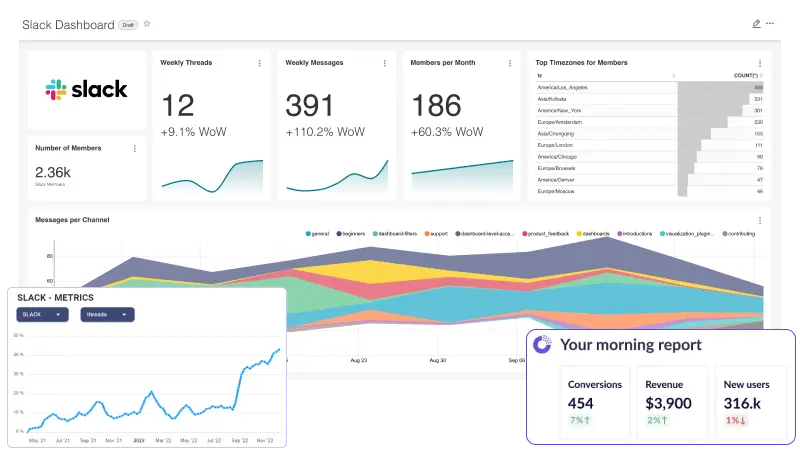 Slack is a team communication tool that centralizes messaging, file sharing, and integrations, helping teams stay connected and collaborate efficiently.
Slack is a team communication tool that centralizes messaging, file sharing, and integrations, helping teams stay connected and collaborate efficiently.
Features:
- Real-time messaging with channels and direct messages
- Integration with over 2,000 apps (Google Drive, Asana, Workstatus, etc.)
- File sharing and searchable message history
- Voice and video calls within the platform
USP
Offers a highly flexible and organized messaging system with deep integrations to streamline workflows.
Ideal for
Teams are looking for instant, organized communication and seamless app integration.
Zoom
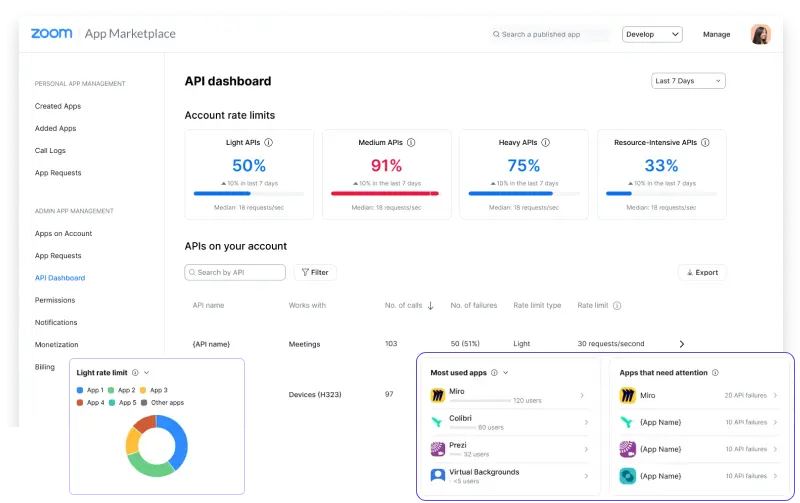 Zoom is a video conferencing platform that enables teams to easily hold virtual meetings, webinars, and remote collaboration sessions.
Zoom is a video conferencing platform that enables teams to easily hold virtual meetings, webinars, and remote collaboration sessions.
Features:
- HD video and audio conferencing
- Screen sharing and meeting recordings
- Breakout rooms for team discussions
- Integration with calendars and collaboration tools
USP
Reliable, high-quality video and audio with robust collaboration features for remote teams.
Ideal for
Organizations need a robust and scalable video conferencing solution with ideal communication tools.
Asana
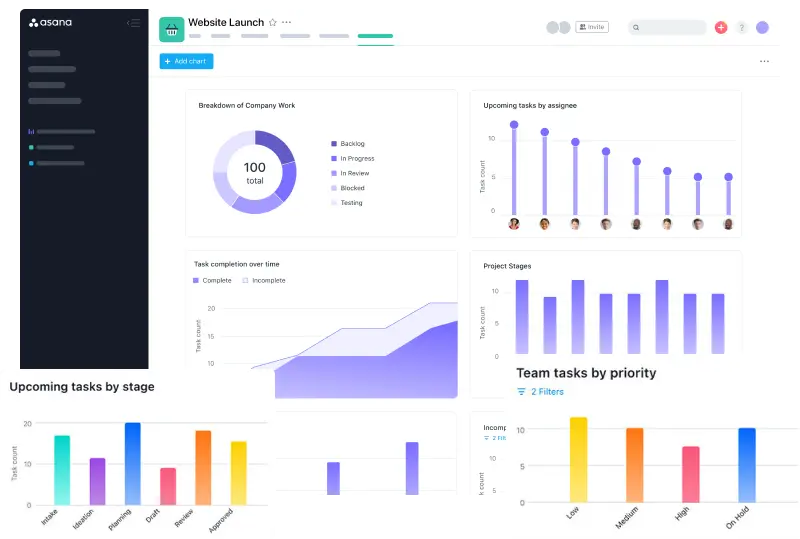 Asana is a remote team management tool that strives to help teams organize work, monitor it, and effectively meet deadlines.
Asana is a remote team management tool that strives to help teams organize work, monitor it, and effectively meet deadlines.
Features:
- Task assignments with deadlines and priority levels
- Project timelines and Kanban boards
- Workflow automation for repetitive tasks
- Reporting and analytics for performance tracking
USP
Provides a visual, structured approach to project and task management, improving workflow efficiency.
Ideal for
Teams need an intuitive tool to manage tasks, projects, and team collaboration.
Google Workspace
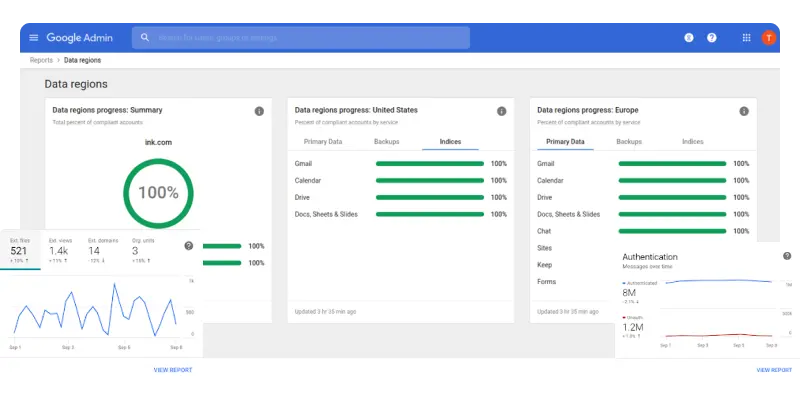 Google Workspace is a cloud-based suite of productivity applications that allows teams to collaborate in real-time on documents, spreadsheets, and presentations.
Google Workspace is a cloud-based suite of productivity applications that allows teams to collaborate in real-time on documents, spreadsheets, and presentations.
Features:
- Shared documents, spreadsheets, and presentations
- Cloud storage with Google Drive
- Real-time collaboration with team members
- Gmail, Calendar, and Meet integration
USP
Seamlessly integrates productivity apps into one ecosystem, allowing teams to collaborate in real time from anywhere.
Ideal for
Teams require cloud-based collaboration, document sharing, and communication tools.
Trello
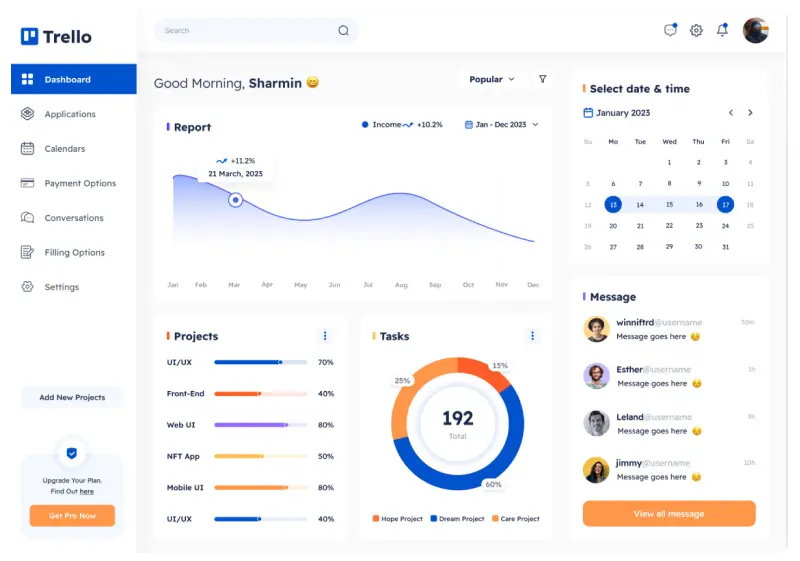 Trello is a visual project management solution that helps teams structure and manage their work through boards, lists, and cards.
Trello is a visual project management solution that helps teams structure and manage their work through boards, lists, and cards.
Features:
- Drag-and-drop task management with Kanban boards
- Customizable workflows and automation
- Team collaboration with comments and file attachments
- Integration with productivity apps like Slack and Google Drive
USP
Simple yet powerful visual task management system that enhances team coordination.
Ideal for
Teams are seeking an easy-to-use, flexible project management tool with visual organization.
Microsoft Teams
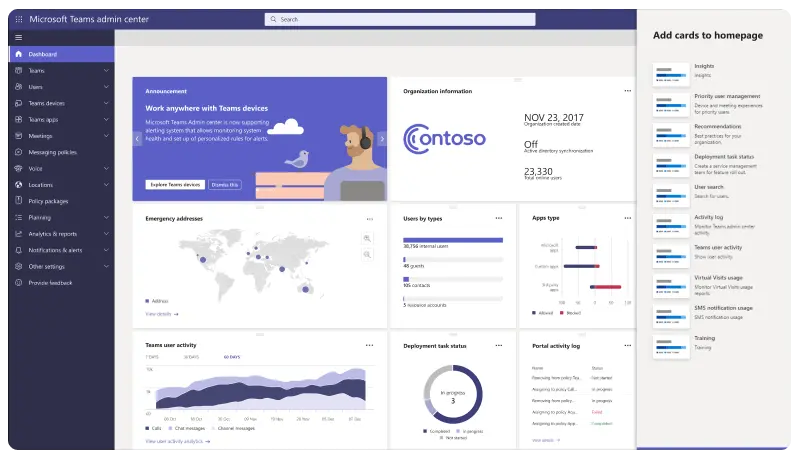 Microsoft Teams is joined with Microsoft 365 as a collaborative space where work can be done in real-time, either remotely or in-office.
Microsoft Teams is joined with Microsoft 365 as a collaborative space where work can be done in real-time, either remotely or in-office.
Features:
- Messaging, video calls, and team channels
- File sharing and real-time document collaboration
- Integration with Microsoft 365 apps (Word, Excel, Outlook)
- Security and compliance features for enterprises
USP
Deep integration with Microsoft 365, makes it the perfect solution for organizations already using Microsoft tools.
Ideal for
Businesses that rely on Microsoft 365 for communication, file sharing, and productivity.
Criteria for Choosing Collaboration Tools
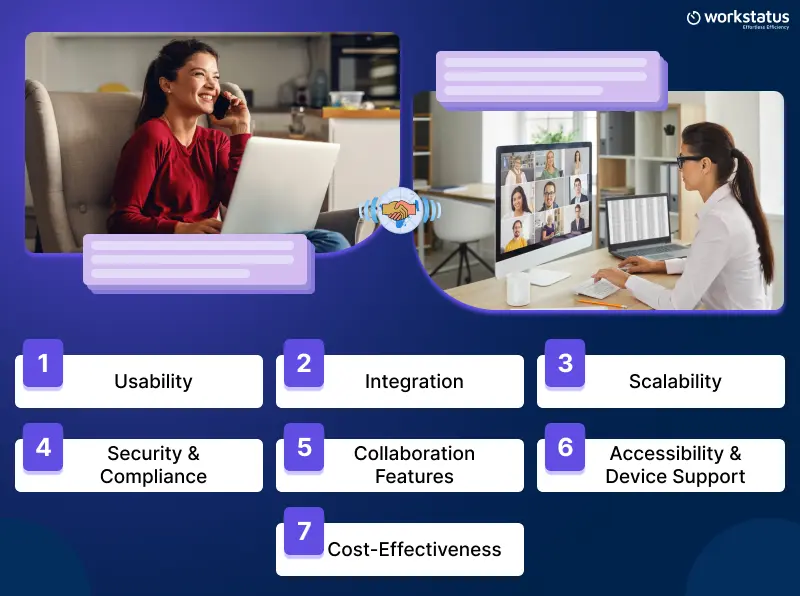 Choosing the best collaboration software seals the communication gap, leads to efficient task assignments, and makes teamwork seamless.
Choosing the best collaboration software seals the communication gap, leads to efficient task assignments, and makes teamwork seamless.
Here are the key points to consider when comparing your options:
- Usability – A working tool must have an easy-to-use and intuitive interface to shorten the learning curve for your team members.
- Integration – Works well with existing software to streamline workflows, including project management, communication, and file-sharing platforms.
- Scalability – Your app must not compromise on performance, and it should be flexible enough to adapt to your team size and requirements.
- Security & Compliance – Strong encryption, data protection policies, and compliance with industry regulations ensure secure sensitive information.
- Collaboration Features – Real-time messaging, file-sharing, task assignments, or video conferencing can improve teamwork in a geographically dispersed work environment.
- Accessibility & Device Support – Cloud-based mobile and desktop compatibility tools enable seamless access from anywhere.
- Cost-Effectiveness – Consider pricing plans that balance features and budget while supporting long-term use.
Choosing the right team collaboration tools based on these criteria helps remote and office teams stay connected, productive, and efficient.
Benefits of Using Collaboration Tools
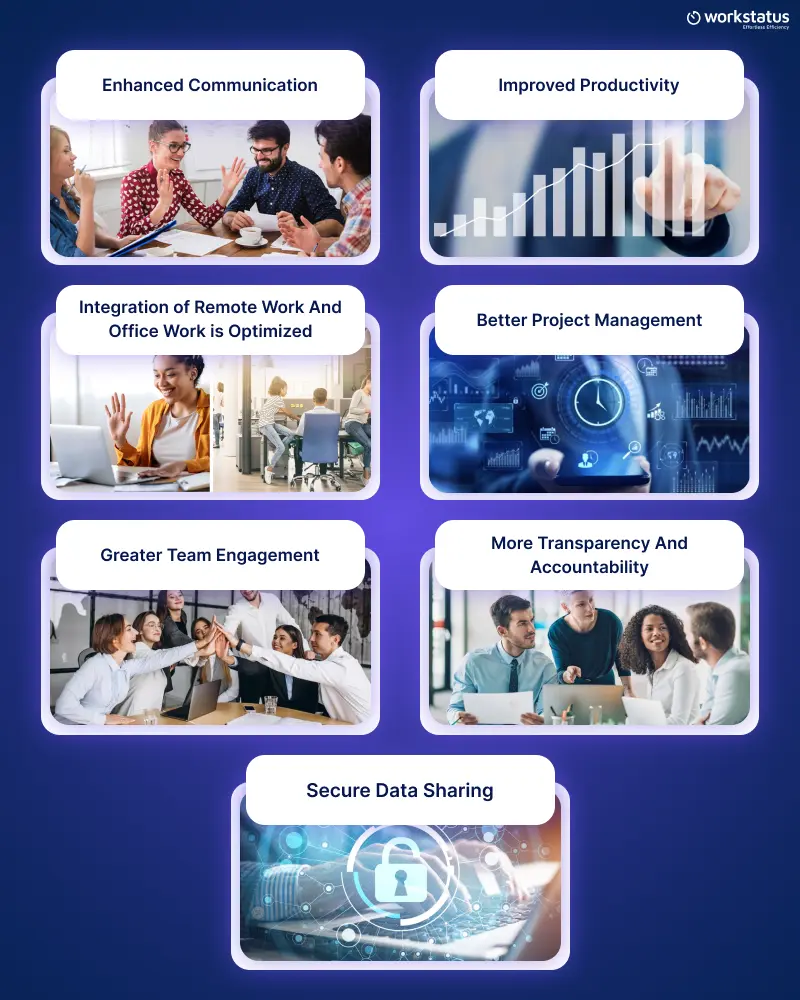 Collaboration tools are valuable in connecting remote teams with their office teams; they ensure easy communication and teamwork.
Collaboration tools are valuable in connecting remote teams with their office teams; they ensure easy communication and teamwork.
This is how they support organizations:
- Enhanced Communication: Instant messaging, video conferencing, and team workspaces significantly reduce miscommunication, better align teams, and encourage quicker responses.
- Improved Productivity: Central task management, document sharing, and workflow automation simplify processes, streamlining tasks to reduce delays.
- Integration of Remote Work And Office Work is Optimized: Cloud-based tools enable real-time collaboration between office and remote workers.
- Better Project Management: Task tracking, deadline reminders, and milestones-track progress keep teams on track and enable them to meet their goals.
- Greater Team Engagement: Interactive features, including shared workspaces, brainstorming tools, and webinars, enhance teamwork and allow team members to bond.
- More Transparency And Accountability: Clear workflows with real-time task and responsibility updates increase transparency and accountability, minimizing confusion and inefficiencies.
- Secure Data Sharing: Access controls based on user roles and encrypted file storage ensure the protection of sensitive business data yet make it convenient for authorized personnel.
By using the best collaboration software, enterprises can create active connections with remote and in-office employees, hence filling the gap.
Tips for Maximizing Collaboration Tool Effectiveness
Collaboration tools are key to enhancing communication and remote team productivity. Implement strategies that optimize their use to get the most out of these tools.
These tips will help ensure your tools support seamless workflows and drive results:
Provide Proper Training
Ensure all team members are well-trained on the selected tools. Offer tutorials, onboarding sessions, and resources to help them navigate features efficiently.
- Onboarding
- Tutorials
Establish Clear Usage Guidelines
Define how and when tools should be used. Set expectations for communication, file sharing, task assignments, and meeting protocols to maintain consistency.
- Protocols
- Expectations
Integrate Tools with Existing Workflows
To minimize disruptions, choose collaboration tools that seamlessly integrate with your current project management, communication, and remote team productivity software.
- Compatibility
- Efficiency
Encourage Regular Communication
Leverage messaging apps, video conferencing, and project boards to maintain transparency and alignment. Use dedicated channels for different projects or topics to keep discussions organized.
- Transparency
- Alignment
Automate Repetitive Tasks
To reduce manual work and improve efficiency, utilize built-in automation features, such as task reminders, workflow approvals, and time tracking.
- Reminders
- Workflows
Ensure Security and Compliance
Protect sensitive data by using tools with strong security measures, such as encryption, access controls, and compliance with industry regulations.
- Encryption
- Access Control
Gather Feedback and Continuously Improve
Regularly check in with your team to assess the tool’s effectiveness. Be open to feedback and adjust workflows or explore alternative solutions if necessary.
- Evaluation
- Adaptation
By following these best practices, teams can maximize the impact of collaboration tools, improving remote team productivity and teamwork in both remote and office environments.
Closing Thoughts
As the boundary between remote and office teams disappears, these tools have become essential for productive working and team spirit. Each solution can be used for different purposes, including tools that facilitate communication like Slack and Zoom and project management like Asana and Trello.
For businesses keen on overall solutions encompassing time tracking, employee monitoring, and project management, Workstatus presents an all-in-one platform for keeping workforces properly coordinated and top-performing.
Ready to manage your team better and ramp up your performance? Try Workstatus and find out how it can supercharge your work.
FAQs
Ques: How do collaboration tools improve productivity?
Ans: Collaboration tools streamline communication, automate tasks, and integrate workflows, enabling teams to work more efficiently and stay aligned on projects.
Ques: Can these tools be used for both remote and office teams?
Ans: Yes, most collaboration tools are designed to be flexible and can work seamlessly for both remote and office-based teams, improving overall coordination.
Ques: What’s the benefit of using Workstatus for collaboration?
Ans: Workstatus is a platform that combines time tracking, productivity monitoring, and project management. It offers real-time insights and enhances team accountability.



